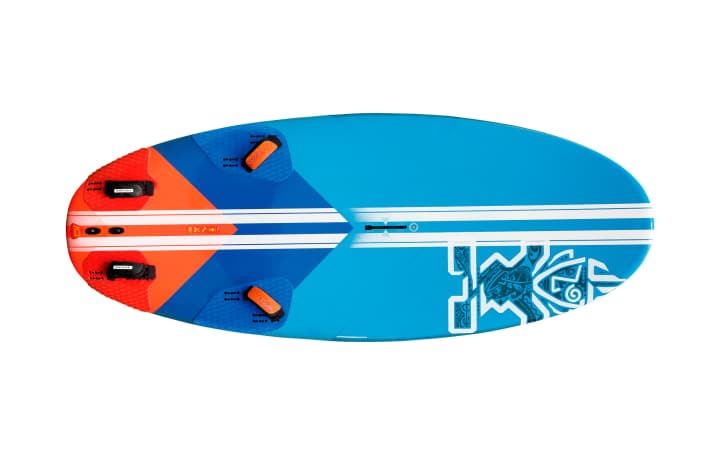Test 2017: Foils and foil boards
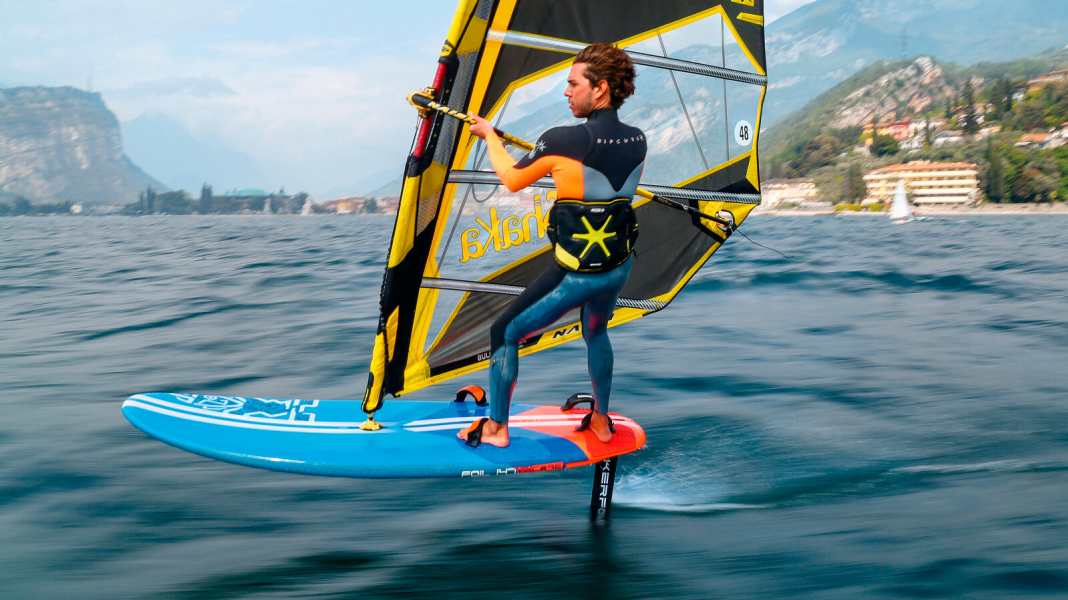
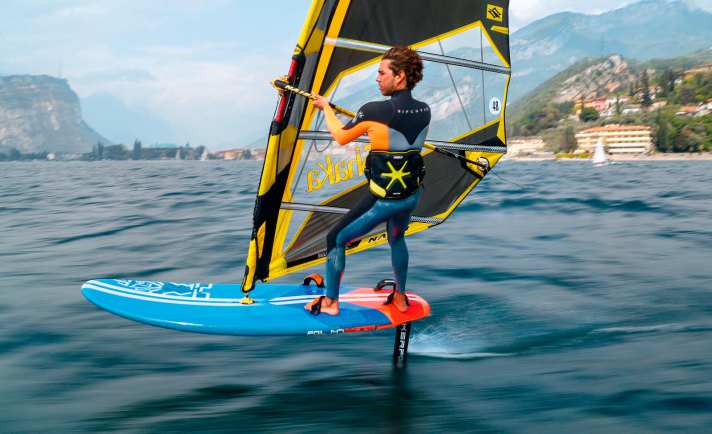
It is transmitted by word of mouth. Some people catch it and only get worse. Others seem immune to it. Foils will not replace classic light wind material, but they offer advanced windsurfers a new and undoubtedly fascinating challenge. surf provides practical information and an initial comparison of the systems.
"Formula is dead"says Werner Gnigler at least. But when the JP Australia designer says this, his assessment is probably rooted in his experience with the top riders and relates to the racing scene - with top riding skills, plenty of time to practise and the desire for something new. If you still want to start planing as early as possible in the lightest wind on Walchensee, you won't want to push the planing limit down again with the foil. Although you can sail with smaller sails, the required skill level is one step higher and without a lot of practice you will be disappointed with the speed you achieve. On the other hand, the subjective feeling of speed in the lower planing range is new and impressive. There is only bobbing or gliding freely and almost without resistance. And 35 km/h on the foil feels like 45 on the freerider - it's worth a try. To make sure it doesn't go completely wrong, you'll find the first basic section. Detailed individual tests will follow. No need to panic: Many foils are currently only available in homeopathic doses - if at all.
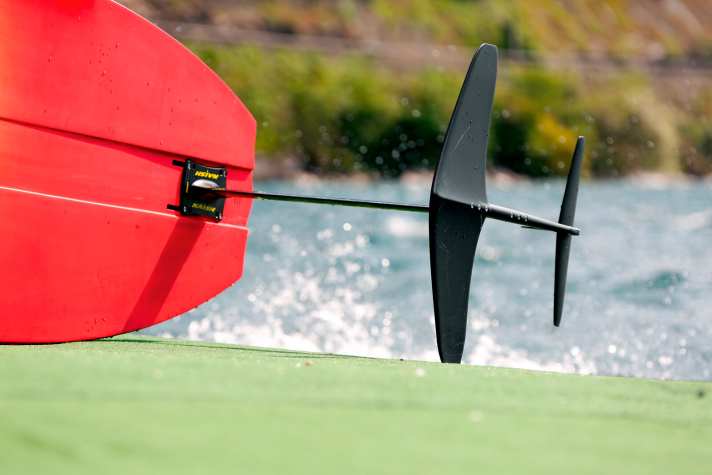
The "right" mast length
Before foiling comes the vocabulary. They have to be learnt anew - and don't always sound obvious. The "mast", for example, is the vertical, powerful main profile that is connected to the board. The mast lengths in this test were between 55 and 95 centimetres. On the shortest mast, the Naish SUP and windsurf convertible flies low over the water. You can then beam up to the first floor on the Starboard Carbonfoil with 95 centimetres (including fuselage measured 99 centimetres, four longer than NeilPryde). Let's learn some vocabulary again: the fuselage is the long part that supports the two wings at the bottom of the mast. Which is the better choice? One thing is clear: the 55 mast is optimised for stand-up paddling in the waves. There is no chop in the way when riding the wave, you want to "hover" just above the surface of the water and still have a chance of getting down into the water with the paddle in a bent position. An extremely long mast should give beginners in particular a few adrenaline rushes.
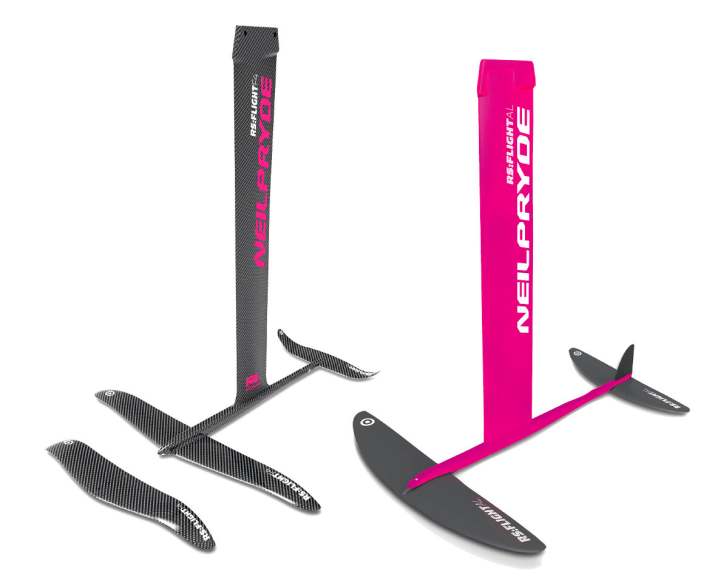
Just like on our first outings on the longest windsurfing pole. The Naish SUP Allround Foil is also suitable for windsurfing on Lake Garda, but you quickly wish you had a bit more ground clearance to get over the choppy waves without throttling, even if the occasional bumps seemed gentle and harmless. For foil beginners, 70 to 85 centimetres should be ideal, even the BIC Foil, which actually works well, seemed to us to be at the lower limit at 70 centimetres after a short time.
With increasing safety, the advantages of longer foils become more apparent. Even larger chop can be crossed with stability at a constant flying height. Once the long mast has lost its terror and the rider has overcome their fear of heights, you will react more calmly to the up and down movements of the foil on the long foil - after all, there is still room for manoeuvre upwards. Only when the mast is "at the end", when the foil breaks through the surface of the water, does the current stop and the high flight comes to an abrupt end. Top-foilers increasingly edge the board upwind - just like the kiters do. This requires longer masts - and a rethink of board sizes.
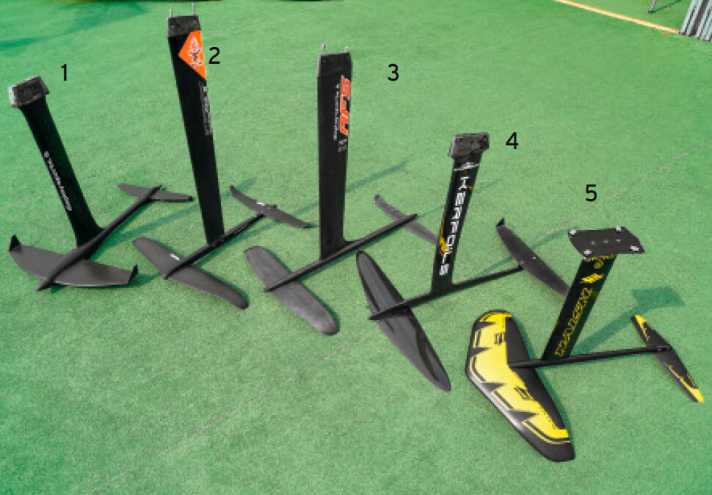
The "right" board size
This rethink is already in full swing among the top riders in the World Cup teams: "At first, everyone wanted the big foil board, but now most of them take the smaller 135" says JP shaper Werner Gnigler "some really good guys ride extremely upwind and therefore even narrower boards with a width of 72 centimetres." However, we wouldn't recommend such extreme experiments for beginners to foiling, at least not for most foils. Although our reference slalom board, the RRD X-Fire 114, offers the tempting option of using a mid-wind slalom board as a light-wind foil board, the 70-centimetre narrow board turns out to be very demanding as a foil board. Although planing and getting onto the foil is smooth, the board feels like a balance beam in the air and the leverage over the narrow tail width is not exactly enormous for levelling and steering.
Jibing on the foil requires a lot of practice, similar to the even narrower AHD AFS-1. While a 5.0 felt good on the moderately wide Naish boards, the sail feels very lost on the JP or the even wider Starboard. These boards are intended for 6.8 and larger.
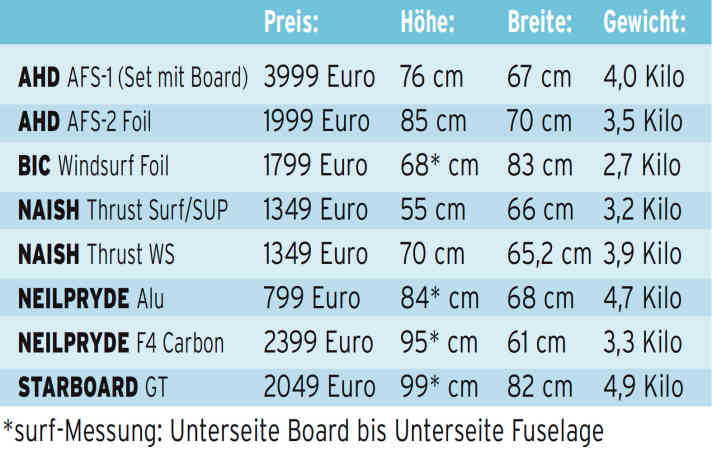
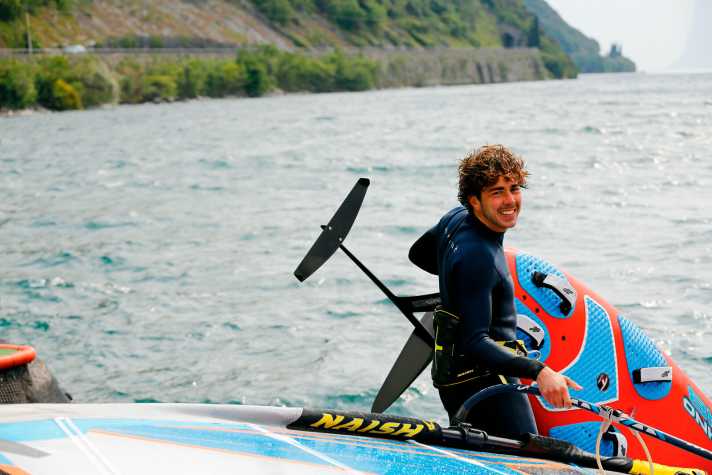
The "right" foil
How stable does a foil glide through the water? How early does it come out? Our test riders found both Naish foils to be particularly stable low-end foils, the Starboard as a "GT" version, with the two large wings and the short fuselage, as well as the NeilPryde aluminium foil and the AHD AFS-2. The NeilPryde F4 looks very sporty and performance-oriented. While AHD (pre-series), BIC and the AHD FS-2 have a full carbon construction with mast and fuselage made from a single piece and filigree, sometimes sharp-edged wings, Starboard and NeilPryde (aluminium) are designed to be easy to dismantle and robust with very solid-looking connections.
Starboard offers a modular system for almost any combination of three mast lengths, two front and two back wings and two fuselages. The "GT" version with large front wing and large back wing, mounted on the short fuselage, flew very stable and safe. It comes out of the water early and was also particularly easy to control in the jibe. Instead of the 95 mast available for testing, we would have liked to have tried the 85 mast. The set-up with the Starboard Foilboard is also recommended for beginners. If you use the smaller wing at the front (set-up "Slalom"), the board comes onto the foil later, remains easy to control and then flies at Mach 2.
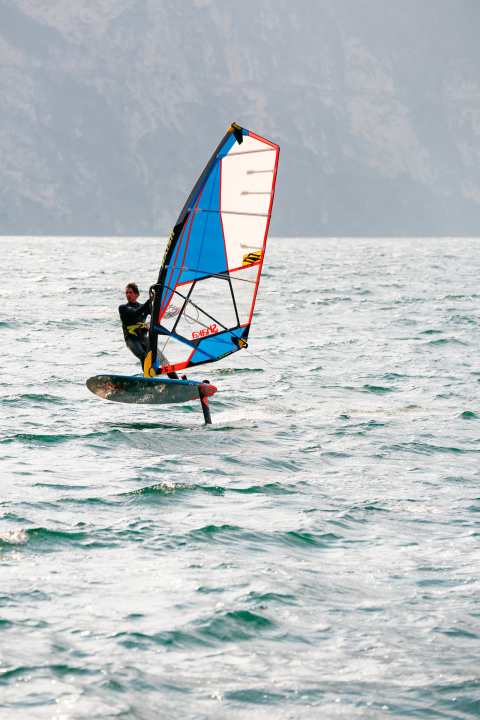
The Top-Foil fromNeilPrydethe "F4 Carbon", is only available as a set with two front wings and both the price and the tuning options do not necessarily recommend it to inexperienced beginners. Even with a large front wing you first start to glide, then the board goes onto the foil, the flight attitude is not as stable as with the aluminium model. The trim of the rear wing (+/- 1.5 degrees) allows you to tune the performance-optimised foil very finely, but also adjust it a lot. It goes crazy upwind, is very fast, but also a little more demanding - more of a tip for experienced foilers or surfers who prioritise performance above all else when foiling.
TheNeilPryde aluminium foil is not only the best in terms of price, but also made a very good impression during our test rides. It comes onto the foil even at quite low speeds, glides stably and forgivingly, and is stable through the jibe on the NeilPryde board. The GRP wings have fewer sharp edges and no pointed wing tips, which also reduces the potential risk of injury. Savings were made by using aluminium for the mast and GRP for the wings. The connection between the mast and fuselage (also aluminium) is bolted and looks very stable, leaving a handy package for transport.
In a very similar way, theAHD AFS-2. For us, this is without question the first choice over the AFS-1. The foil is just as stable in the water as the NeilPryde Aluminium, but is a little more softly damped, very calm and without any tendency to suddenly do unpredictable things.
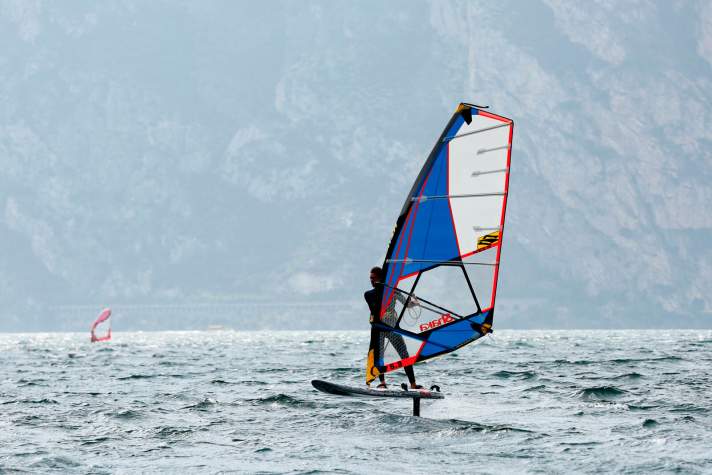
Naish goes its own way with rather stocky, large wings. The result is the easiest access to foiling. Very early, easy to control lift for a stable flying position and the simplest jibing characteristics. Not a race foil, but for relaxed "early foiling" with not too large sails.
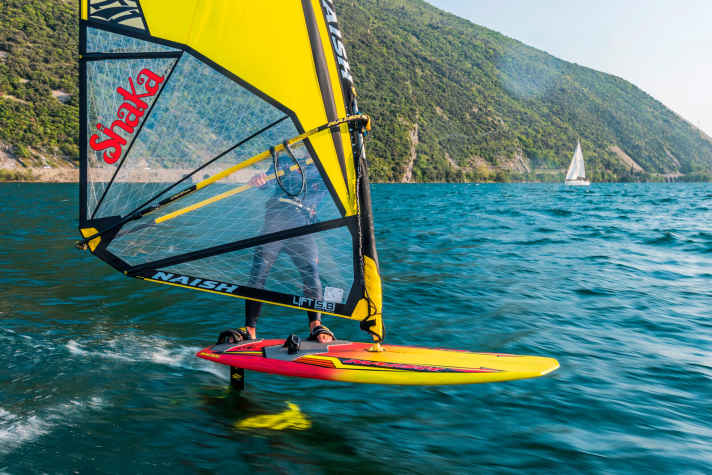
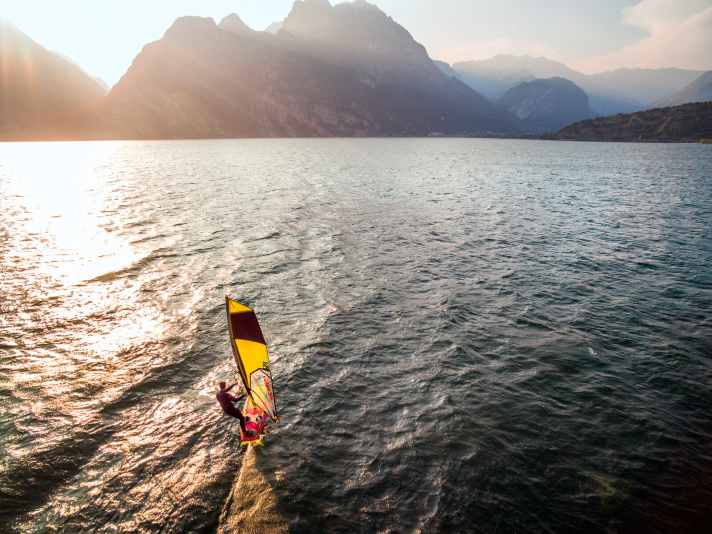
BIC offers a relatively inexpensive carbon foil at 1799 euros. The mast is very short at just 68 centimetres including the fuselage. The foil is easy and stable to ride, but we did miss some cruising height. Unfortunately, the holes did not match the BIC board and the head was too thick and too high for the other Tuttle boxes without reworking.
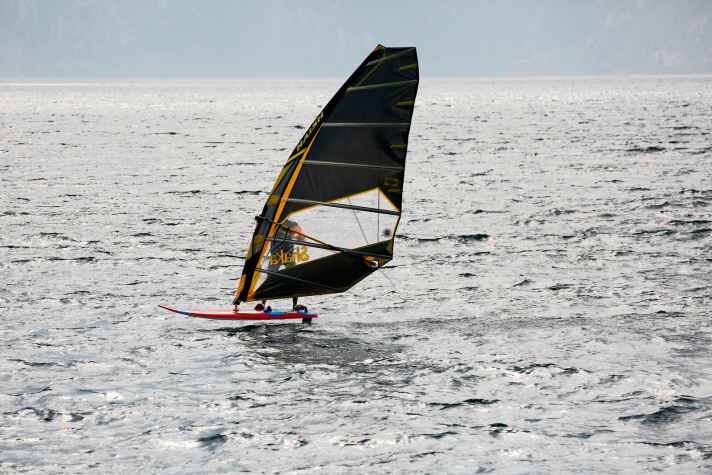
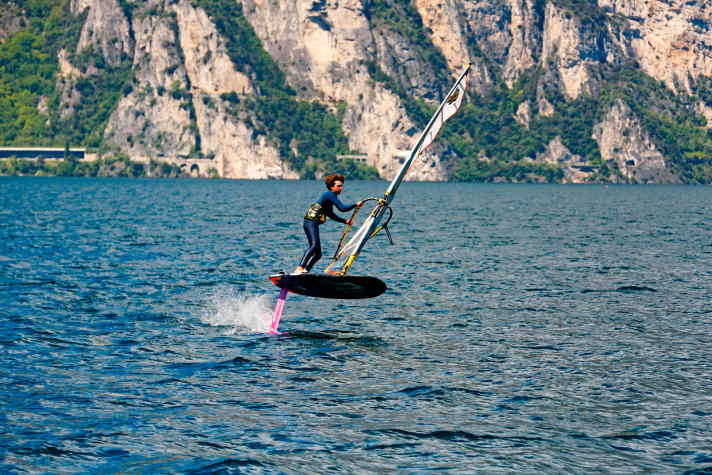
THE DETAILS OF THE TEST PRODUCTS
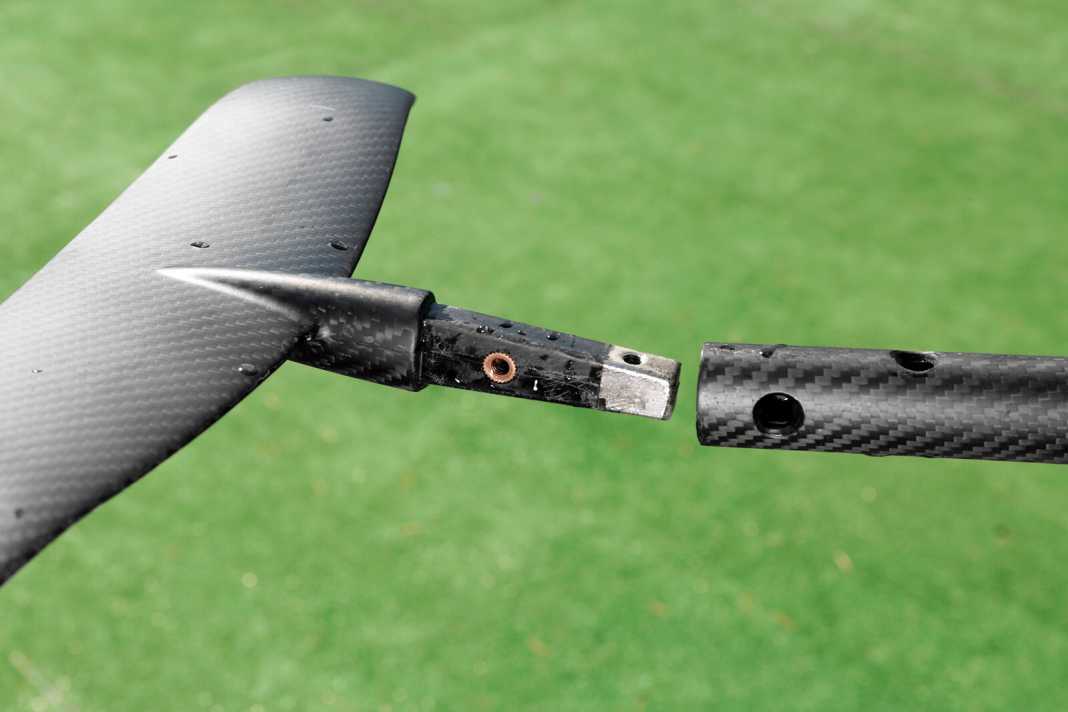





THE TEST RESULTS
JP-Australia Hydrofoil 135 Pro
We were able to test the smaller of two special foil boards from JP-Australia, which is still 86 centimetres wide. The board is extremely light and just wants to fly. In contrast to the Starboard, the same foils under this board provide even more "lift", you will certainly need a little more practice for stable round flights, also because the straps are positioned far back. On the other hand, the extremely short board is much more sporty and lively, conveys more performance potential and is less bulky once it is in the air.
Length: 2.15 metres; width: 86 centimetres; weight: 7.5 kilos; price: 2399 euros
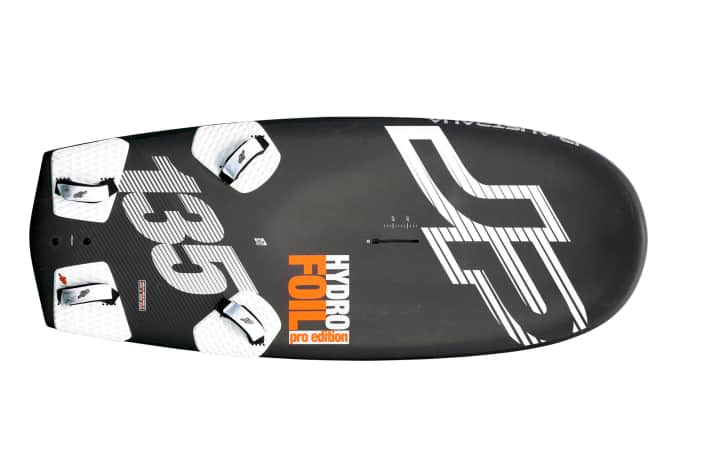
BIC Techno 148
A large board - at a favourable price - and it also has a deep-tuttle box. This could be the ideal entry-level foil board. It's easy to get started with foiling, but you probably won't have any real fun. On the one hand, the narrow strap spacing at the back makes it difficult to control the sporty BIC foil, while on the other, the long length and high weight keep pushing the board down at the front.
Length: 2.64 metres; width: 75 centimetres; weight: 10.2 kilos; price: 999 euros
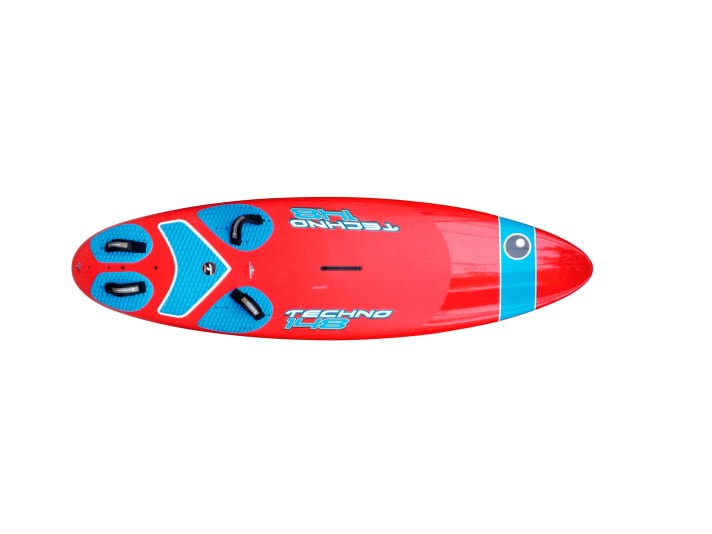
AHD SL 2 122
The AHD slalom board SL 2 122 marks the lowest width that combined fun and control during our tests. The set-up looks very sporty, the Foil AFS-2 (a pre-series model) fits well, is easy to control and looks particularly soft and smooth, even if it is not super fast.
Length: 2.34 metres; width: 76 centimetres; weight: 7.0 kilos; price: 1999 euros
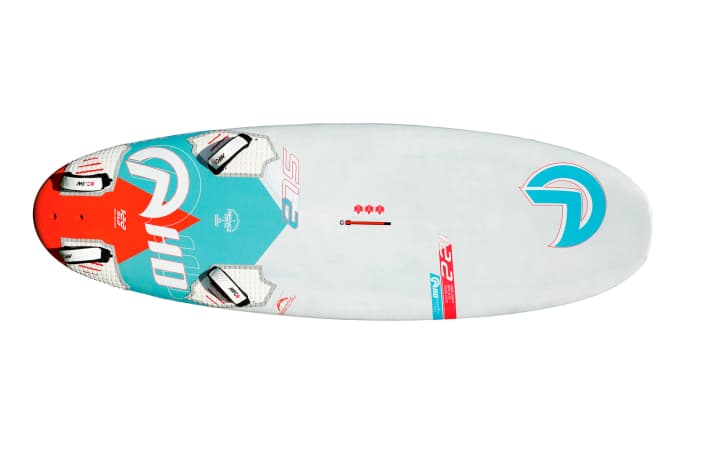
AHD AFS-1
The AFS-1 is a pioneer, so to speak, and AHD rider Bruno André repeatedly shows incredible action on the foil when windsurfing and with the SUP board. With the new AFS-2, however, the windsurfing era of the AFS-1 has probably come to an end, because although the extremely buoyant foil comes out of the water at very low speeds, it is very difficult to control in conjunction with the very narrow board (only this combination fits) and requires by far the greatest skill in the jibe compared to all other foil combos. The successor AFS-2 is in the pipeline, wider, without the hole at the bow (in practice without any advantages) and in combination with a foil AFS-2 MK II with a smaller front wing. That should be exciting again.
Length: 2.38 metres; width: 67.5 centimetres; weight: 8.6 kilos; price: 3999 euros (board incl. foil)
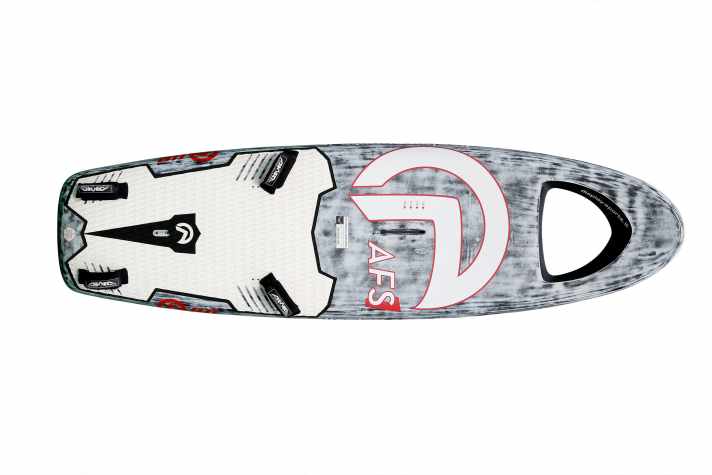
Naish Hoover 122 WS Foilboard
It couldn't be simpler. The Naish set of board and windsurfing foil is particularly easy to master for a foil set. The board can also handle 7.7mm sails and is also suitable for 4.8mm sails. The straps are far in, it is easy to get in and yet the riding position in the harness is relaxed right from the start, just like you know it from windsurfing. The board "hovers" with a lot of lift very early on and is very stable with small sails, allowing you to set steering impulses at any time with little power. The foil has little tendency to shoot upwards uncontrollably, and is most likely to respond to the subsequent attempt to intercept it with a kind of spin-out and a very controlled, soft entry. All reactions of the foil and board seem to be well controllable and predictable. The foil is optimised for easy foiling and probably won't win any (upwind) races. However, it is ideal for uncomplicated foiling in light winds with small sails.
Length: 2.29 metres; width: 73 centimetres; weight: 7.8 kilos; price: 2099 euros
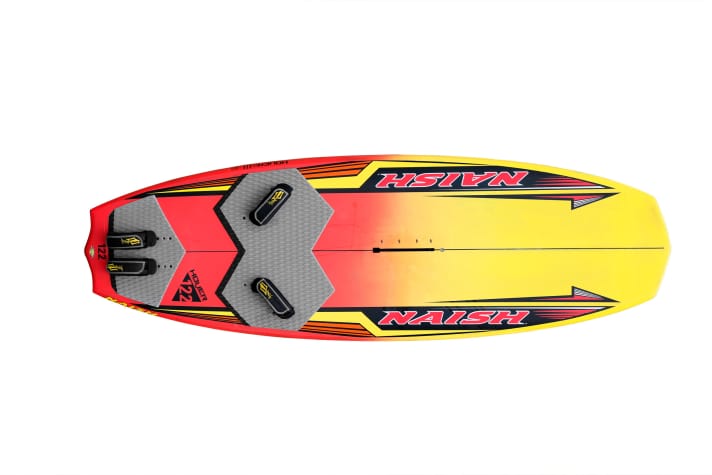
Naish Hoover 120 SUP / WS Foilboard
Our tip for stand-up paddlers in disguise who only want to windsurf-foil occasionally. Although the board comes out very early when windsurf foiling, the SUP foil mast with only 55 centimetres does not quite give you the feeling you want to experience and is more suitable for flat water than for rough 4 x 4 slopes. On the other hand, the board can be used for SUP foiling and also works as a conventional wave SUP without a foil with four wave fins.
Length: 2.28 metres; Width: 76 centimetres; Weight: n/a; Price: 2299 euros
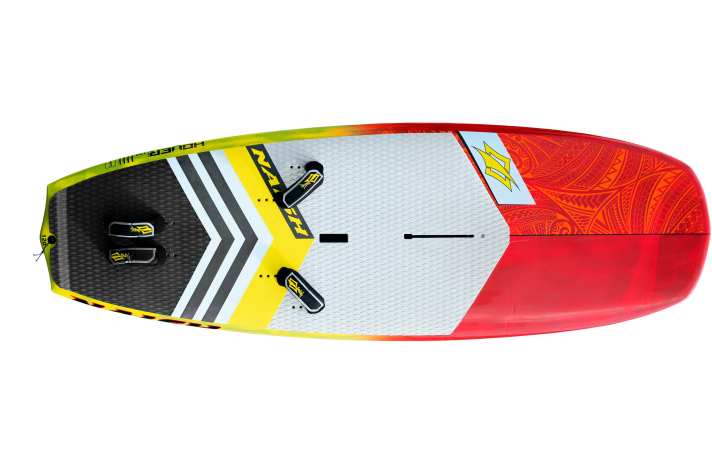
RRD X-Fire 114 LTD V9 FB
For experts, this could be an option in the long term: a board that really accelerates with the 7.8 as a slalom rocket and can be upgraded with the foil in light winds thanks to the reinforced tuttle box. However, this makes it much more difficult to get into foiling. On the straights and in the gybe, the necessary control over the foil is lacking without the appropriate sensitivity. Less experienced riders will certainly not get a secure feeling so quickly. In our opinion, the next larger X-Fire 122 with a length of 228 centimetres and a width of 82 centimetres should work well.
Length: 2.35 metres; width: 70 centimetres; weight: 6.8 kilos; price: 2539 euros
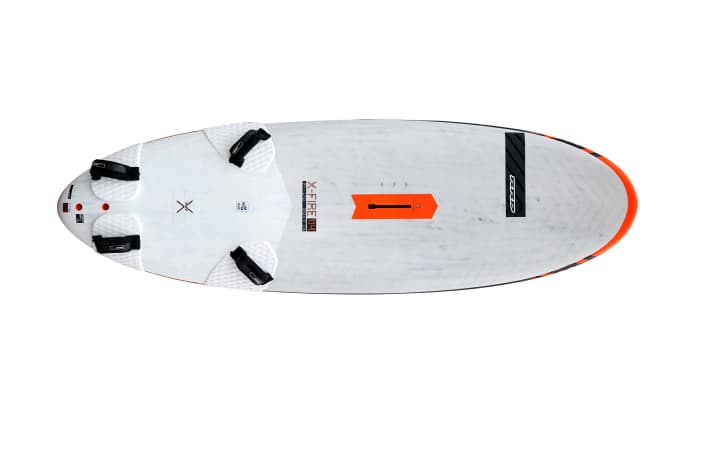
Starboard Move MKII 5.7
As big as a table tennis table, super stable when planing, in the air and in the jibe. Together with the "GT" foil, the Starboard offers the easiest introduction to foiling alongside the Naish board. The large width provides control and safety, both straight ahead and in the jibe, and the length is a good compromise between not too sensitive and light-footed enough to take off. The board is basically a light wind freeracer with a stronger box and is also fully suitable for "normal" windsurfing.
Length: 2.41 metres; width: 95 centimetres; weight: 9.6 kilos; price: 2799 euros
